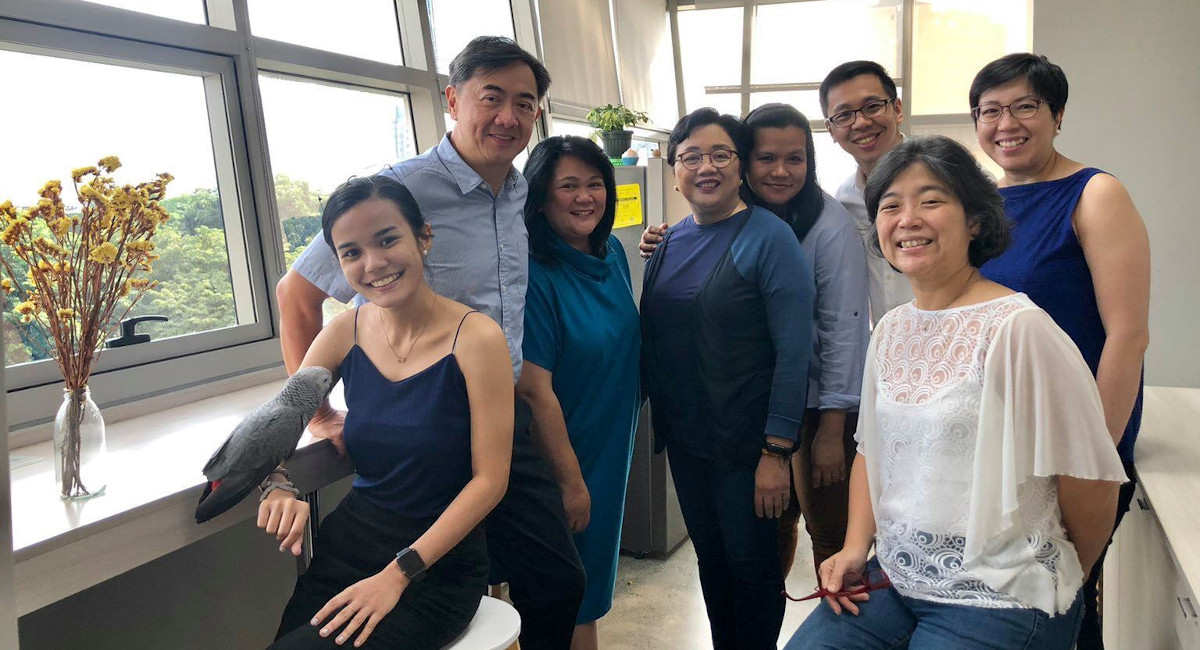
Online education has been the focus of Fr Johnny Go SJ, JCAP Basic Education Secretary, and the team that makes up the Ateneo de Manila University Science and Art of Learning and Teaching (SALT) Institute. He was recently assigned to lead Ateneo de Manila’s Online Learning Task Force, the university’s response to the migration to online education. In May, SALT launched a new professional certificate course: Adaptive Design for Learning, which provides online training on how to design and deliver online education. Fr Go’s work also includes the crafting of AteneoBlueCloud–touted as an online community and virtual campus for learners and educators–which outlines the philosophy of online Jesuit education. Fr Go answers some questions about the massive shift to online learning and how students and educators need to adjust to this new mode of learning.
Q: The Covid-19 pandemic has changed so much of the way we live, work, and learn. Now that it’s all about online education, how was SALT able to quickly fill the need for this?
JG: We at the Ateneo SALT Institute have been working on this shift to online education even before the Covid-19 pandemic. When the crisis happened and when the university requested us to take the lead in the online learning task force, we just had to step up. We came up with the framework, Adaptive Design for Learning (ADL), because there were too many different approaches to online learning. Just consider the terms–online learning, distance learning, remote teaching–and their intended meanings are also not always the same. In short, we needed to bring the university on the same page, agree on our vocabulary–and more importantly, our philosophy–our assumptions and values–of an online Jesuit education.
Q: There are over 2,000 faculty and formation professionals enrolled in this new course, what kind of feedback are you receiving from them? Are they finding it easy to “retool and reinvent” themselves as educators? Are they themselves finding it easy to learn online?
JG: A lot of the faculty not just in Ateneo de Manila, but the other Philippine Jesuit schools and universities, have thankfully expressed their appreciation for the course. The certificate course is a project-based, self-paced training course where they are actually handheld and guided in designing their online courses. I always describe it as a “one-stop convenience store,” where they can go shopping for good ideas and tools for the online courses they are designing. But in the spirit of Ignatian tantum quantum, they are free to ignore whatever they don’t find helpful–and to shop in the bigger shopping center that is the Internet. Now our faculty have somewhere to start, a place where they can find the best curated ideas and tools, and are not left to their own devices. They are also working in teams.
Some of those taking the ADL course have expressed surprise at the amount of work it requires. To them, our usual tongue-in-cheek response is: “Why? Were you expecting Netflix?”
Q: AteneoBlueCloud (ABC) is an online community and virtual campus–and conveys the philosophy of online Jesuit education–what exactly is this philosophy?
JG: Here are some basic principles of Ateneo de Manila’s philosophy for online education: well-designed online educational experiences can be as effective as traditional in-person academic and formation programmes. It is rooted in Ignatian spirituality and pedagogy and set apart by the Jesuit trademark of magis and cura personalis. Remote teaching and remote self-study are but two forms of doing online learning and teaching. AteneoBlueCloud will model Ignatian pedagogy as well as 21st-century educational principles.
Q: What makes an online education experience work effectively? With virtual classrooms becoming more common these days, can it replace the traditional way of schooling?
JG: It’s all about the design. How do we design the digital experiences of our students so that they engage in virtual reflection and even take online action. Very IPP (Ignatian Pedagogical Paradigm) when you think about it!
Just to be clear: by no means are we saying that online education ought to replace the traditional face-to-face. We just don’t have a choice these days. Online technology is our primary–if not exclusive–means of education. Having said that, I would like to add that I also believe that whatever we learn in this migration to online learning will continue to be valuable when we go back to the classroom. We will have become better educators because we will have become more learner-centered in our approach.
Q: How do we bridge the gap for students, especially those who are in schools located in far-flung places, who have limited access to technology and the Internet?
A: Our approach is characterised by inclusivity and empathy. No learner will be excluded or left behind because of limited or no access. There are provisions in both design and delivery of the courses so that all learners will have adequate–and where possible, equal–opportunities for learning. For every online course, we are making sure that students can have access to low-bandwidth versions (with audio only or text only). We have also set up helpdesks for students who have difficulty in accessing the Internet, they can be provided with alternative versions of the course–including hard copies.

